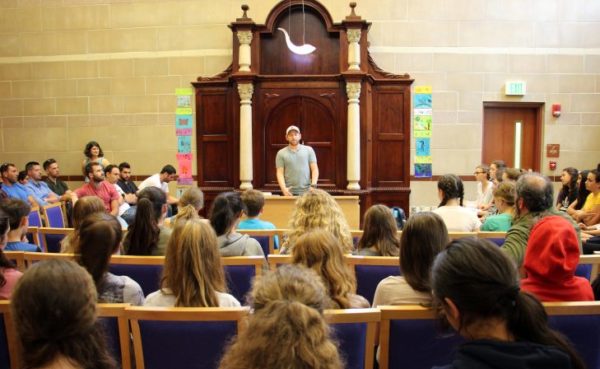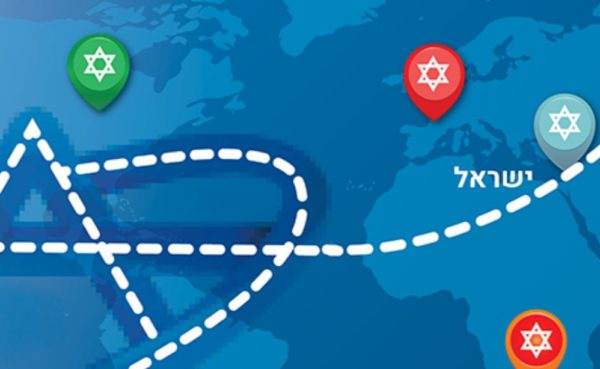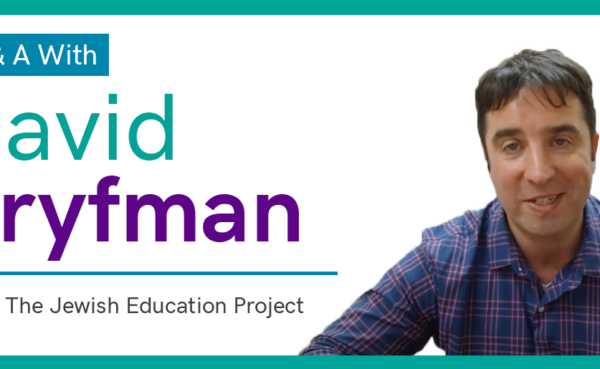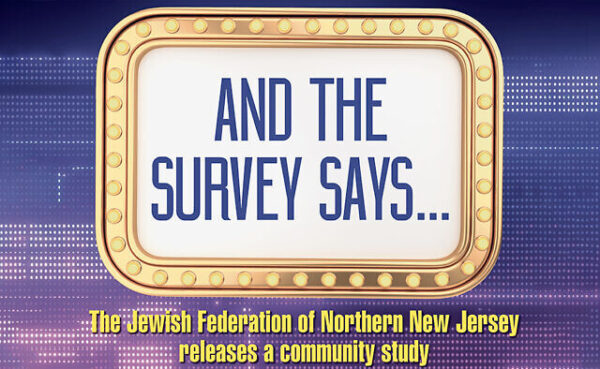
Why invest in community visioning and support?
By Natana Shek, Pamela Teitelbaum, Kim Newstadt, Maya S. Horowitz
As C-suite professional leaders of Jewish community foundations and federations, we are in fortunate positions to help impact the future of local Jewish life in our communities of Montreal, Cincinnati and Southern Arizona, respectively. We want to make decisions that will positively influence how people connect with, experience and gain value from Jewish life. With that in mind, over the last few years, our organizations each separately engaged Rosov Consulting to gather data and knowledge about the Jews in our communities, our communities’ current Jewish offerings and what people really want out of local Jewish life.
These efforts were different from the common community demographic studies that estimate the number of Jews in a community and where they live. Our processes, each unique, when viewed across all three communities, included: mapping our communities’ infrastructure of Jewish organizational buildings; seeing which community offerings, such as preschools and teen programs, are at capacity; developing new Theories of Change that convey what we do and why; diving deeply into the needs and wants of individuals; and more. While data gathering is a serious investment and takes time, we are already seeing its value. Community data are important building blocks to strategic planning efforts that lead to more thoughtful resource allocation.
In the spirit of helping others in similar positions, below are a few ways assessing the needs of our communities have changed and improved how we work to engage more people in Jewish life.
Enabling more proactive decision making. While Rosov Consulting’s work in community visioning and support was right-sized for each of our local needs, there were some important common denominators. Rosov Consulting only began to gather data once they understood what we each hoped to gain from this new knowledge. They then created survey instruments and held interviews with key stakeholders and small group discussions posing the questions we each wanted to answer. What do people want out of Jewish life? Why do people choose to engage or not engage? Where are possible opportunities to better leverage what our communities already have done or are doing? It’s important to elicit these answers from a wide range of people representing different ages, levels of engagement, Jewish knowledge, and more. For example, Maya Horowitz and the Jewish Federation and Jewish Community Foundation of Southern Arizona team implemented a major marketing campaign across native, paid, and earned media with radio, social media and print ads that led to over 1,800 people completing the community-wide survey – including many who were not involved in Jewish life at that time but desired to be. Having the answers to those questions posed above (and many more)—and moving beyond each of our own assumptions and echo chambers—enables greater and sharper proactiveness. Instead of merely responding to proposals or funding an event or program as a “quick fix” to a larger, possibly systemic community problem, community data enables us to develop initiatives strategically, aligned with priorities that reflect the people and needs of our communities.
Taking risks and creating change with confidence. Equipped with data, we all have more confidence to try new engagement approaches. In Cincinnati, Kim Newstadt and her trustees and colleagues at The Jewish Foundation of Cincinnati (TJF) learned that nearly half of Jewish adults seek more connection to Jewish community and experience different barriers to participation. TJF understood our responsibility to serve the full community and saw these findings as an opportunity to experiment with current and future funding priorities in complement to our investments in strengthening institutions. In part, this led to the creation of [RE]flect Cincy which integrates underrepresented demographics into TJF’s decision-making process. The [RE]flect Cincy team is applying community data and lived experiences to the design of funding parameters to spark new experiments and thinking around Jewish connection.
In Montreal, Natana Shek and Pamela Teitelbaum and Federation CJA learned that 50% of interfaith couples want more opportunities to connect with others like them and feel the community doesn’t offer enough opportunities. This led the federation to committing resources and to developing a Theory of Change to ensure a more inclusive community. In Southern Arizona, community professional and volunteer leadership started from a place of curiosity around levels of engagement in Jewish life. The data produced by their process helped show clear pathways for how local agencies and congregations can work beyond their current offerings to deliver on the most important needs and interests in Southern Arizona. Now, the federation and foundation can make data-driven decisions to invest in and support approaches that reflect the outcomes the community has prioritized – and find partners in the community to deliver upon those outcomes.
Getting to Know Your People—and People Who Aren’t Yet Your People. Assessing local needs deepened our understanding of the individuals in our communities and how we can better welcome and engage them in Jewish life. In Montreal, our qualitative research process included in-person and Zoom parlor meetings (once the pandemic hit), followed by a survey. Importantly, we tried to reach all community segments—representing different ages, levels of engagement, interests, and other traits—through this research. We learned that for many people, finances, including already being asked to donate to Federation CJA, are a significant barrier to their engagement. Others expressed that the federation should focus efforts in areas they felt were lacking, such as providing services for community members in need. In Cincinnati, our qualitative research process included focus groups around segments of the community that the community study data highlighted as disconnected from current Jewish offerings, specifically: young adults; interfaith families with children and young families with children ages 0-5. Rosov Consulting learned that many people sought to foster Jewish social connections outside of traditional institutions; others felt insecure about their Jewish knowledge. Some felt inauthentic in Jewish spaces and others felt discomfort with the expectations to do, give and commit more. All 3 cities also held community conversations about the data collected. Those conversations were illuminating, especially in Southern Arizona where 80% of families with children expressed a desire to raise their children Jewish – culturally, religiously or both. Knowing this has helped our communities think about different strategies, developing deeper relationships with people to help them on their Jewish journeys.
Developing demonstrable outcomes to measure success. Once you have initial data about your community, you can determine what outcomes you want to achieve. This might include increased numbers of young adults engaging in certain Jewish experiences, or perhaps more people saying they find meaningful connections through Jewish community. In Cincinnati, after the completion of our community study, prior to working with Rosov Consulting, we wanted our local funding to have a positive impact on more individuals, as opposed to just institutions. Our TJF team, particularly the Director of Impact Assessment Mike Boberg, worked closely with the Rosov Consulting experts to develop a foundation-wide set of demonstrable outcomes to assess the impact of our work, informed by community data and knowledge. The Southern Arizona Jewish community, along with Rosov Consulting, developed a working document entitled “Pathways to Enriching Jewish Life” to help guide the process of implementing policy based on survey results. This led to the creation of working groups centered on key priorities, including “Drive Toward a Community-Wide Approach to Jewish Education,” which has been instrumental in facilitating the creation of a pilot program to leverage existing after-care programs to build a more robust experience for Jewish formal and experience education offerings.
Data and knowledge gathering is a significant investment and can take a year or more to bear fruit. Building out the right Key Performance Indicators—which are critical to then being able to measure success—takes time. Moreover, as we gathered data, we began to realize parts of our communities—and the organizations and people in them—that we needed to learn more about. This, too, takes time. But is it worth it? Yes! We purposefully conduct monitoring and evaluation processes with the intention of strategic learning and data gathering. Data serves to set a baseline understanding of a community, informs assessment in real-time, and can be shared to ensure that stakeholders have a seat at the decision-making table. Having conversations and making decisions grounded in data provide clarity and shed light on what can otherwise be confusing issues around community goals and bandwidth. Stakeholders can have divergent views based on anecdotal data. But when their conversation is premised on shared insights, gleaned from professionally mined data, the nature of those conversations and decision-making processes change. Now, we each have developed or adapted strategic plans grounded in reality and reflective of the people in, and possibilities of, our communities. We have greater confidence as we make decisions about new approaches to and investments for Jewish engagement in our communities. We have the building blocks of knowledge to create real change and to more clearly define the impact we want, and expect, to have.
Natana Shek is chief Jewish identity and engagement officer at Federation CJA – Montréal. Pamela Teitelbaum is chief strategy and impact officer at Federation CJA – Montréal. Kim Newstadt is director of research + learning at The Jewish Foundation of Cincinnati. Maya S. Horowitz is director of marketing, communications, and events at The Jewish Federation and Jewish Community Foundation of Southern Arizona
originally published in eJewish Philanthropy




